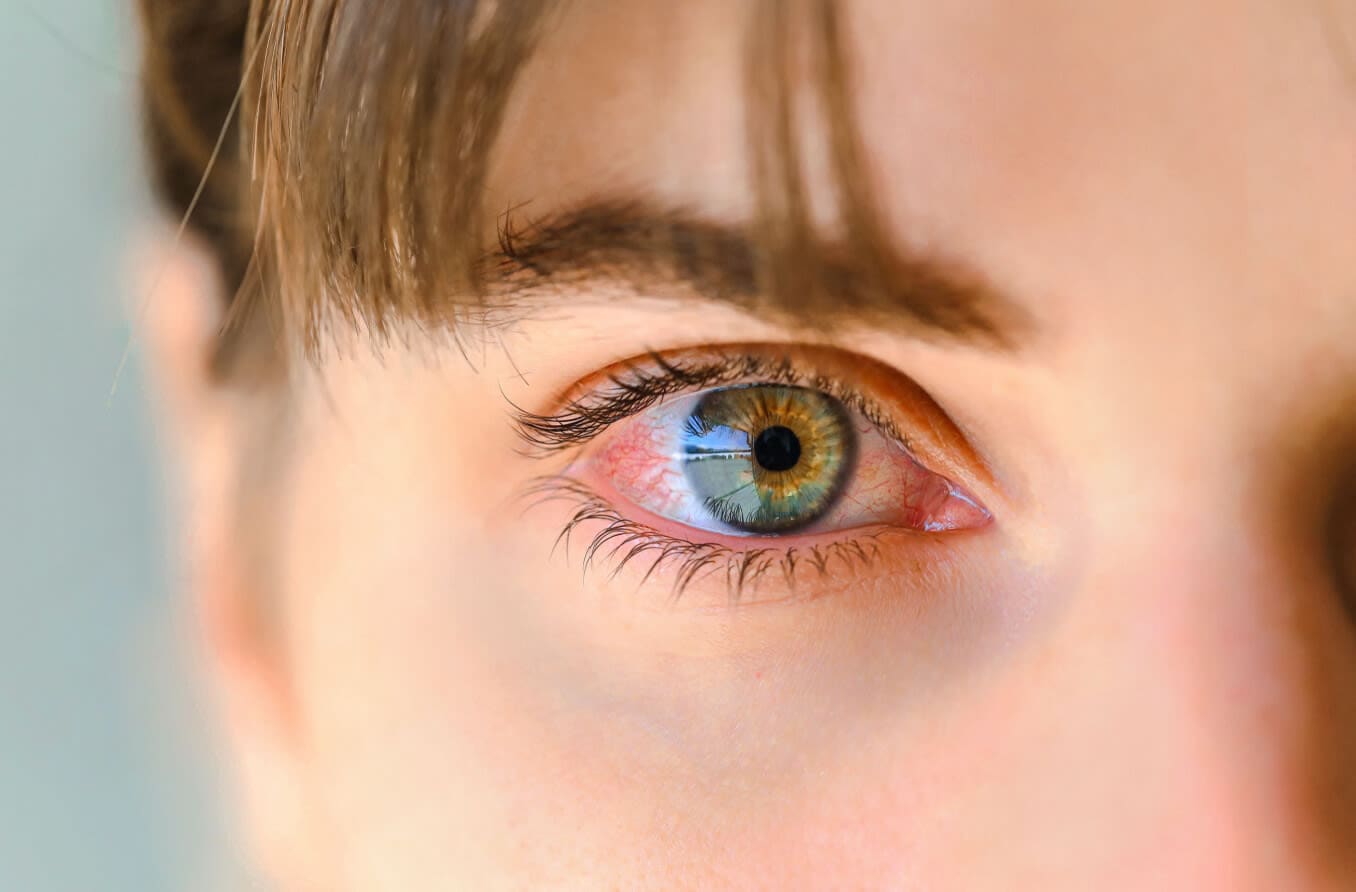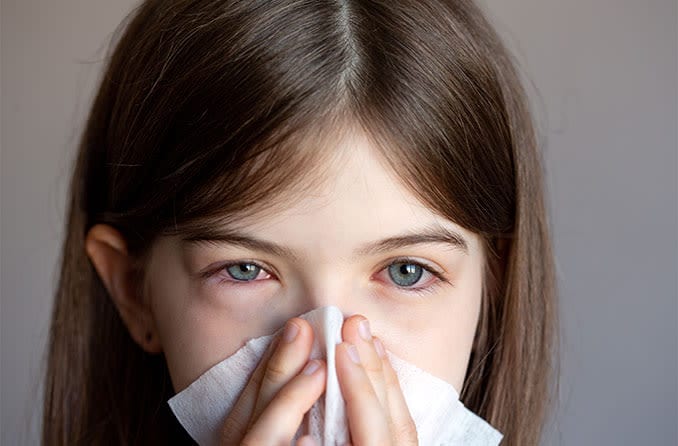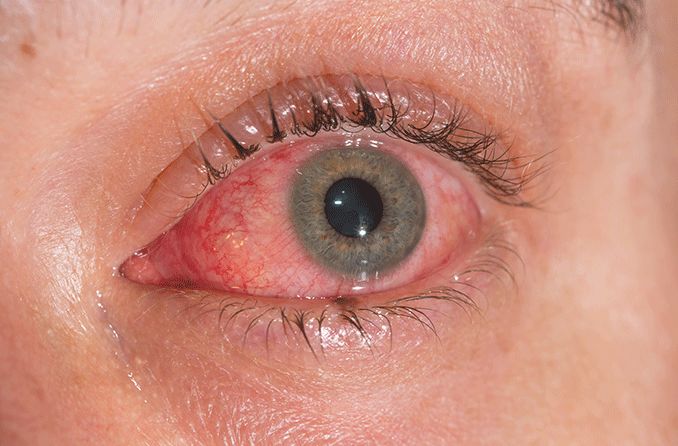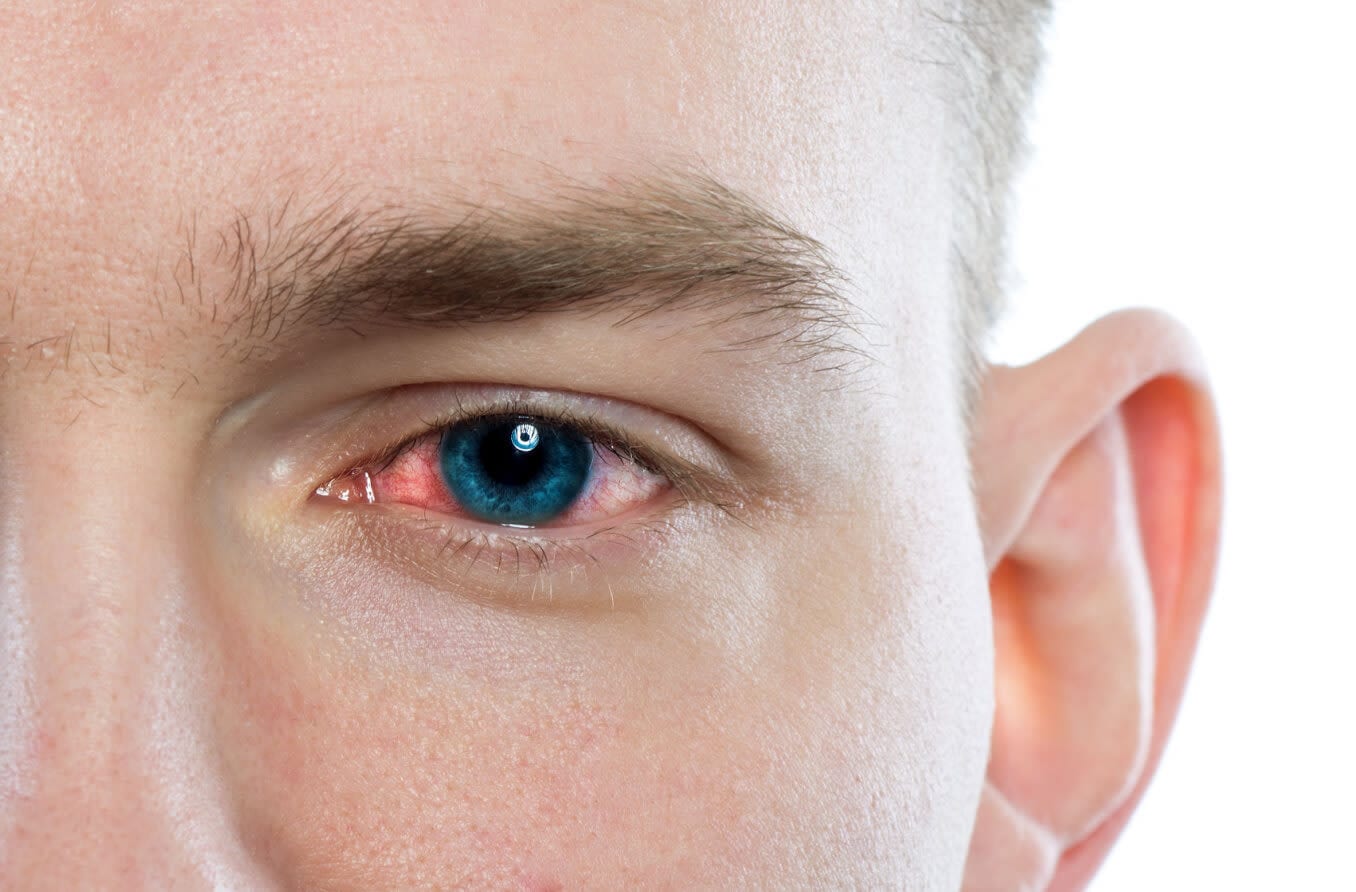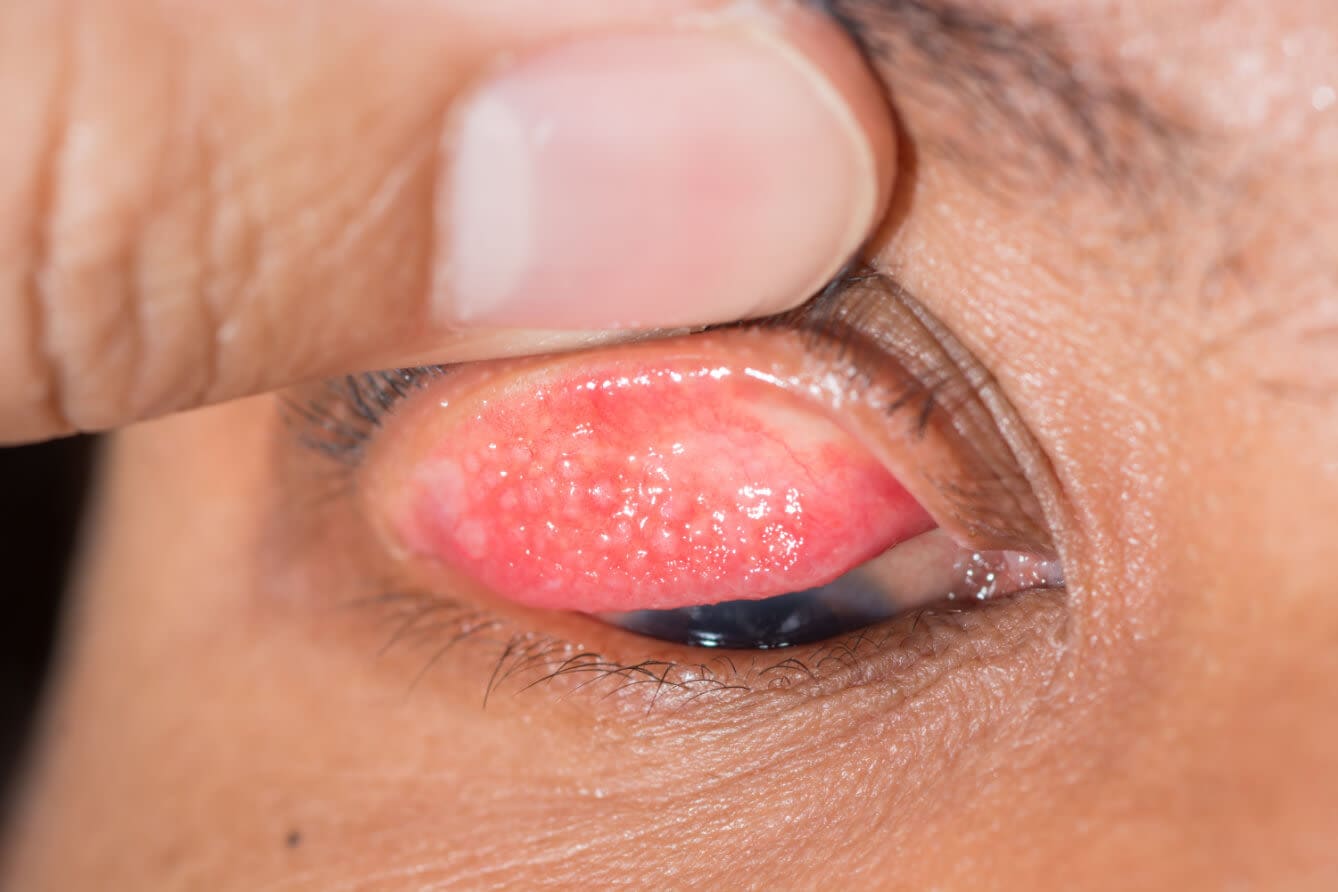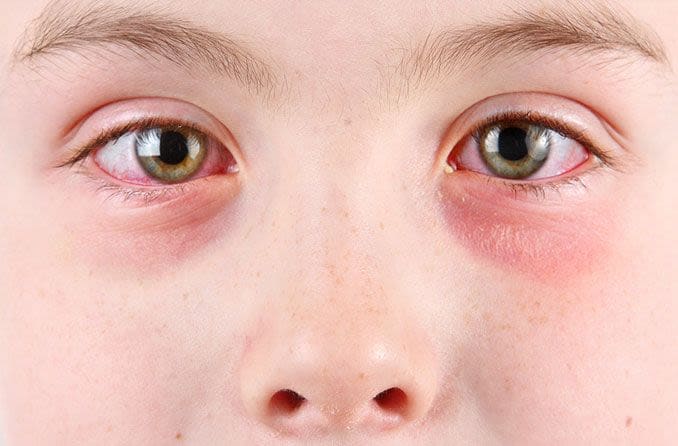Each type of keratoconjunctivitis comes with its own set of causes and complications. This includes the following:
Keratoconjunctivitis sicca (KCS)
Also known as dry eye syndrome, KCS is one of the more common forms of keratoconjunctivitis. It occurs when both the cornea and conjunctiva of the eye experience dryness or inflammation.
KCS can be caused by underlying medical conditions. Insufficient tear production, side effects of certain medications and other factors can also cause KCS. Women and older adults are more likely to get KCS than other demographics.
Atopic keratoconjunctivitis (AKC)
Atopic keratoconjunctivitis (AKC) is a type of allergic keratoconjunctivitis. AKC is caused by a genetic disorder called atopy. Atopy causes the immune system to produce extra antibodies to fight off an allergy.
People with atopy have more serious allergic reactions when they come in contact with allergens. Allergens include food or environmental factors.
When the eyes are affected by this response, it can trigger AKC and cause the conjunctiva that lines the eyelids to become red and swollen. In many cases, the lower lid is impacted more so than the upper lid. Symptoms may also seem worse in the winter.
AKC can lead to more serious eye problems if it is not treated, such as scarring, ulceration, cataracts or keratoconus (abnormal thinning of the cornea that causes it to bulge forward). More men are affected by AKC than women.
Vernal keratoconjunctivitis (VKC)
Vernal keratoconjunctivitis (VKC) is another type of allergic keratoconjunctivitis. VKC is associated with chronic and severe allergies. The condition causes notable features such as hard, cobblestone-like bumps located on the upper eyelid. These bumps may be accompanied by swelling or mucous discharge.
VKC affects the eyes on a seasonal basis — most commonly during the late spring and summer months when it is dry and warm. It may also reoccur during the winter.
Unlike atopic keratoconjunctivitis, vernal keratoconjunctivitis affects the upper eyelid more than the lower.
A portion of the treatment for VKC often involves managing allergies to prevent flare-ups. VKC is rare (affecting 0.1 to 0.5% of eye conditions). It mainly affects males between the ages of 3 and 20. In many cases, symptoms subside after puberty.
Epidemic keratoconjunctivitis (viral/adenoviral keratoconjunctivitis)
Epidemic keratoconjunctivitis (EKC) is also known as viral keratoconjunctivitis or adenoviral keratoconjunctivitis. It is a very contagious viral infection caused by a group of viruses called “adenoviruses.” These also cause infections such as the common cold.
You can get EKC by coming into contact with another person who currently has the virus and then touching your eyes. Touching objects or surfaces that are contaminated with the virus and then touching your eyes can also cause you to become infected.
Because EKC is so easily spread, washing your hands frequently is highly recommended during an outbreak.
EKC can cause the same symptoms associated with other types of keratoconjunctivitis. These include eyelid swelling, discharge and redness. On some occasions, it can also cause a fever, fatigue, headache or swollen lymph nodes.
Symptoms may be relieved with the use of artificial tears or cold compresses, but there are currently no effective treatments for EKC. The virus usually resolves on its own within two weeks.
Superior limbic keratoconjunctivitis (SLK)
Superior limbic keratoconjunctivitis (SLK) is chronic and recurrent. SLK affects the following parts of the eye:
Superior bulbar conjunctiva — the clear layer over the eyeball and the sclera (the white of the eye)
Tarsal conjunctiva — the clear layer lining the eyelids
The area above the cornea
There is no known cause of SLK, though it is sometimes associated with rheumatoid arthritis and thyroid disease. SLK most often affects women between the ages 20 and 70. It is also known to slowly develop over a time period of 1 to 10 years.
Phlyctenular keratoconjunctivitis
Phlyctenular keratoconjunctivitis is an inflammation of the cornea and conjunctiva. This type of keratoconjunctivitis is caused by an antigen. A common antigen is staphylococcus aureus bacteria (which causes staph infections). Another is mycobacterium tuberculosis (which causes tuberculosis).
Other types of bacteria can cause it, but these are the most common.
Key indicators of phlyctenular keratoconjunctivitis are conjunctival or corneal lesions or nodules. These can measure between 1 and 2 millimeters.
This type of keratoconjunctivitis commonly occurs in children ages 6 months to 16 years. It is also found more often in girls than boys and tends to occur more frequently in the springtime.
Herpetic keratoconjunctivitis
The herpes simplex virus (HSV) can affect the eyes and cause a viral infection such as herpetic keratoconjunctivitis. This condition can cause swelling, eye sores or discharge, among other symptoms.
Infections associated with ocular herpes are mainly caused by type I of HSV. This is the same type that causes cold sores. It’s possible to contract the condition after touching a cold sore near your mouth and then touching your eye. Type II of HSV, which is sexually transmitted, can affect the eye as well, but this is rare.
Herpetic keratoconjunctivitis may be treated with an antiviral medication in the form of eye drops, ointment or pills. It’s important to get treated for herpetic keratoconjunctivitis promptly to avoid worsening eye problems in the future.
Neurotrophic keratoconjunctivitis (NK)
Neurotrophic keratoconjunctivitis (NK) is a rare disease of the cornea that causes a reduction or loss of feeling in the cornea. This occurs when the trigeminal nerve becomes impaired or damaged. The trigeminal nerve is responsible for sensory feedback.
Since it causes the cornea to become less sensitive and lose feeling, pain is not usually reported in patients. Some may experience blurred vision though. NK is a degenerative eye disease, meaning it gets worse over time. For this reason, early detection is important in the treatment process.

